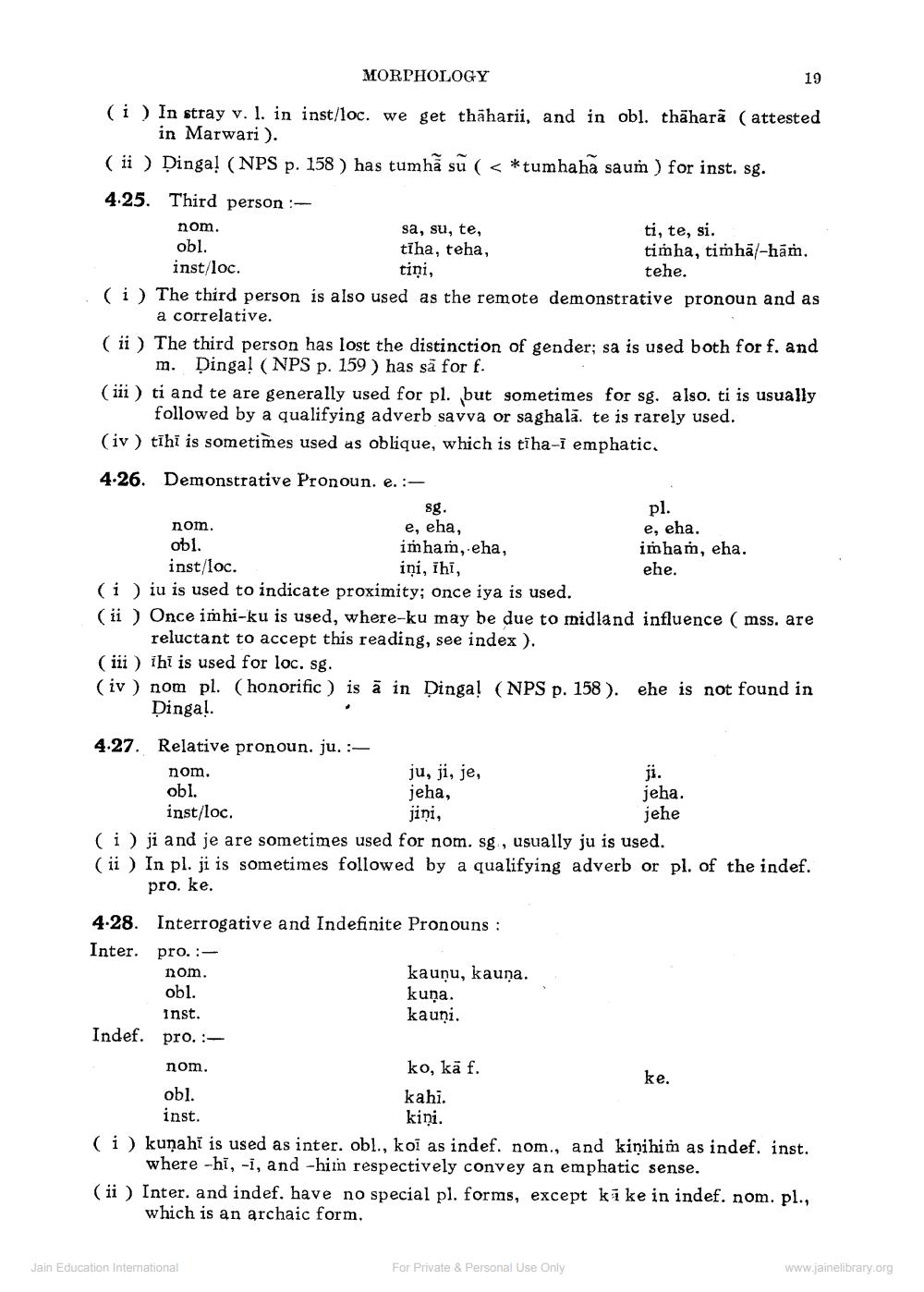________________
MORPHOLOGY
(i) In stray v. 1. in inst/loc. we get thaharii, and in obl. thahara (attested in Marwari).
(ii) Dingal (NPS p. 158) has tumha su (<*tumhaha saum) for inst. sg.
4.25. Third person:
nom.
obl. inst/loc.
(i) The third person is also used as the remote demonstrative pronoun and as
a correlative.
(ii) The third person has lost the distinction of gender; sa is used both for f. and m. Dingal (NPS p. 159) has sã for f.
nom.
obl.
sa, su, te, tiha, teha, tini,
(iii) ti and te are generally used for pl. but sometimes for sg. also, ti is usually followed by a qualifying adverb savva or saghali. te is rarely used. (iv) tihi is sometimes used as oblique, which is t'ha-I emphatic.
4.26. Demonstrative Pronoun. e. :
sg. e, eha,
imham, eha, ini, hi,
inst/loc.
(i) iu is used to indicate proximity; once iya is used.
(ii) Once imhi-ku is used, where-ku may be due to midland influence (mss. are reluctant to accept this reading, see index).
Inst.
Indef. pro. :
(iii) ihi is used for loc. sg.
(iv) nom pl. (honorific) is a in Dinga! (NPS p. 158). ehe is not found in Dingal.
4-28. Interrogative and Indefinite Pronouns :
Inter. pro. :
nom.
obl.
nom.
4.27. Relative pronoun. ju. :
nom. obl.
inst/loc.
(i) ji and je are sometimes used for nom. sg, usually ju is used.
(ii) In pl. ji is sometimes followed by a qualifying adverb or pl. of the indef. pro. ke.
obl.
inst.
ti, te, si.
timha, timha/-hām.
tehe.
ju, ji, je,
jeha,
jini,
Jain Education International
19
kauņu, kauna.
kuna.
kauni.
pl. e, eha. imham, eha.
ehe.
ko, kā f.
kahi.
kini.
For Private & Personal Use Only
ji.
jeha.
jehe
ke.
(i) kunahi is used as inter. obl., koi as indef. nom., and kinihim as indef. inst. where -hi, -1, and -him respectively convey an emphatic sense.
(ii) Inter. and indef. have no special pl. forms, except ki ke in indef. nom. pl., which is an archaic form.
www.jainelibrary.org




